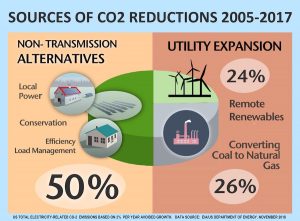Linda sent me an email with the subject line, “Opening Markets to Solar” and comments that the article claims that more transmission is needed to develop solar power.
As best as I can tell, wind and solar are not sharing the same market in the midwest. They are installed differently. The most marketable location for solar seems to be in homes and businesses where it requires no transmission.
In fact, for ratepayers, no form of energy spending is more profitable than (1) energy efficiency or (2) home-business located, grid tied solar. Home solar’s great pricing advantage comes from the extreme pricing difference between retail and wholesale electric power. ( .15 per kWh vs. to .03 per kWh)
The price of retail power has gotten so high in Wisconsin that ratepayers are literally paid to not use grid power. If one can afford to install solar at home or at a business, its cheaper over time than paying higher and higher prices for grid power.
Economically, a home solar owner is credited 14-16 cents per kWh for their solar power. Remote utility-scale wind and solar facilities only get paid only 2-4 cents per kWh.
Thus, home solar power is worth at least .10 more per kWh value than remote solar power.
Why should society develop solar power, remotely, where it requires transmission and is worth 80% less?
Home solar will not overtake supplied power any time soon, but it will someday. Why not Wisconsin energy policy to encourage solar investment where its worth more and does not require transmission or remote solar power plants? In the recent decision on the Cardinal Hickory Creek transmission line, WI is literally taking dollars for home solar and efficiency and putting them into $2.2 billion of transmission under the belief that solar and wind are in the same market.
New transmission lines increase rates. New utility scale solar and wind power plants raise rates. Instead, when energy dollars are used to increase Focus on Energy solar rebates, the solar customers, not ratepayers, pay for the new solar installations. Yet, when dollars go to utility-scale renewables and transmission ratepayers end up paying for all of the new “steel in the ground” plus much more in high interest loans and environmental costs.
At some point Wisconsin ratepayers will finally figure out that home solar, with 80% more value, is, also, in direct competition with all forms of utility scale investment. At that point, customers will have adequate political power to demand better spending policy from the WI PSC.
At the same time, energy efficiency rebates are also increased for families to earn energy profits who cannot afford to “go solar.” Energy Efficiency and conservation are even more profitable. Even better, Energy efficiency and conservation are the largest source of CO2 emission reductions in the US since 2005. Responsible for 50% of the drop, energy efficiency and conservation are twice as effective at slashing CO2 as developing remote power.

